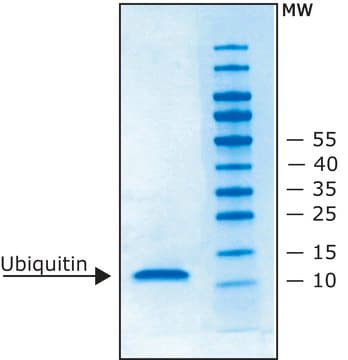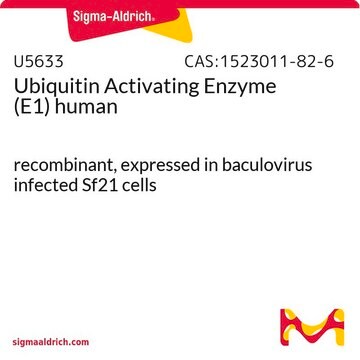U5382
Ubiquitin human
≥95% (SDS-PAGE), recombinant, expressed in E. coli (N-terminal FLAG® tagged), lyophilized powder
About This Item
Recommended Products
biological source
human
Quality Level
recombinant
expressed in E. coli (N-terminal FLAG® tagged)
Assay
≥95% (SDS-PAGE)
form
lyophilized powder
mol wt
10 kDa
technique(s)
mass spectrometry (MS): suitable
solubility
0.05 M Tris pH 7.5: ≥10 mg/mL, clear to slightly hazy, colorless
0.05 M Tris pH 7.5: ≥10 mg/mL
storage temp.
−20°C
Looking for similar products? Visit Product Comparison Guide
General description
Ubiquitin is a highly conserved protein composed of 76 amino acids, and it is expressed universally in all eukaryotes, ranging from yeast to humans.
Application
Biochem/physiol Actions
Packaging
Preparation Note
Legal Information
Storage Class Code
11 - Combustible Solids
WGK
WGK 3
Flash Point(F)
Not applicable
Flash Point(C)
Not applicable
Personal Protective Equipment
Certificates of Analysis (COA)
Search for Certificates of Analysis (COA) by entering the products Lot/Batch Number. Lot and Batch Numbers can be found on a product’s label following the words ‘Lot’ or ‘Batch’.
Already Own This Product?
Find documentation for the products that you have recently purchased in the Document Library.
Customers Also Viewed
Our team of scientists has experience in all areas of research including Life Science, Material Science, Chemical Synthesis, Chromatography, Analytical and many others.
Contact Technical Service







